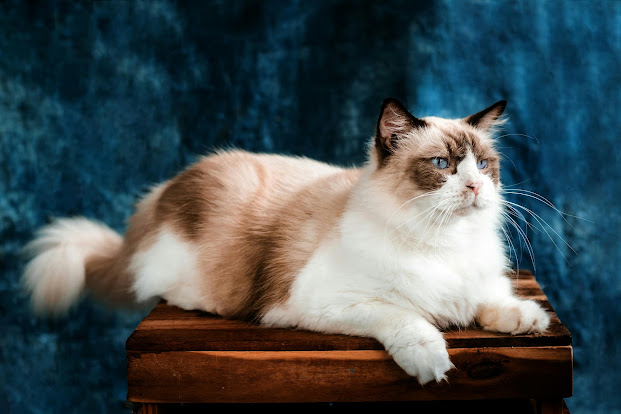Ragdoll is a popular cat breed that is famous for its silky fur, blue eyes and affectionate nature. This cat breed is very popular around the world. Many people like this cat breed but before owning this cat breed they want to know about the cat.
Many people wonder, "Do Ragdoll cats get darker as they age?" The short answer is yes. In this article we try to understand the reason why Ragdoll cats get darker.
Why do Ragdoll cats get darker?
The color change in Ragdoll cats is primarily due to a temperature-sensitive enzyme called tyrosinase, which affects the production of melanin, the pigment responsible for their coat color. There are some other factors that cause Ragdoll cats to get darker.
Factors Influencing Coat Color Change
The primary factor influencing a Ragdoll cat's coat color is temperature. Since tyrosinase is temperature-sensitive, cooler areas of the cat’s body will develop darker fur. This is why Ragdolls, and other similar breeds, have darker points on their ears, tails, and paws.
Age
Ragdoll kittens are usually born all white and start developing their point colors (darker areas) within a few weeks. As they grow, these colors continue to darken, and the process can continue into adulthood. It’s common for Ragdoll cats to get progressively darker over the first few years of their life.
Genetics
The degree to which a Ragdoll cat's coat changes color can also depend on genetics. Each cat carries a unique set of genes that determine the specific pattern and intensity of their coloring. Some Ragdolls might have more dramatic color changes than others based on their genetic makeup.
Seasonal Changes
Just like temperature, seasonal changes can also influence a Ragdoll's coat color. In colder months, you might notice your Ragdoll’s fur appearing darker, while in the warmer months, the coat may lighten slightly.
Conclusion
Ragdolls is a popular cat breed that is famous for its long silky fur and affectionate nature. Ragdoll cats get darker along the age, because they produce a different type of enzyme that is tyrosinase. This hormone is responsible for cat coats. Some other factors may cause the Ragdoll coat color such as genetics, seasonal change and temperature. With proper care and vet advice you reduce the change of your cat color.


























